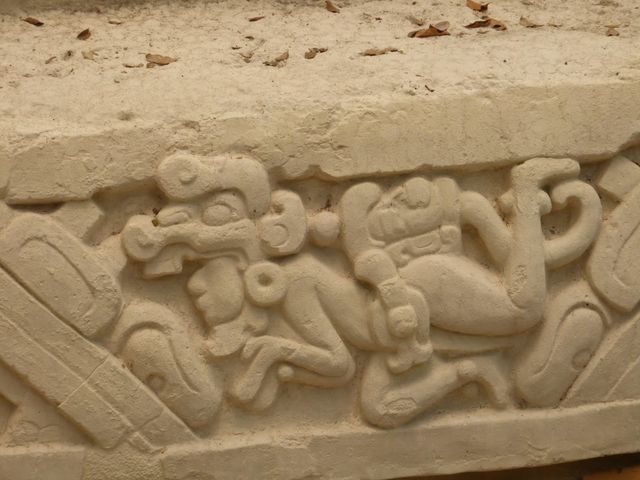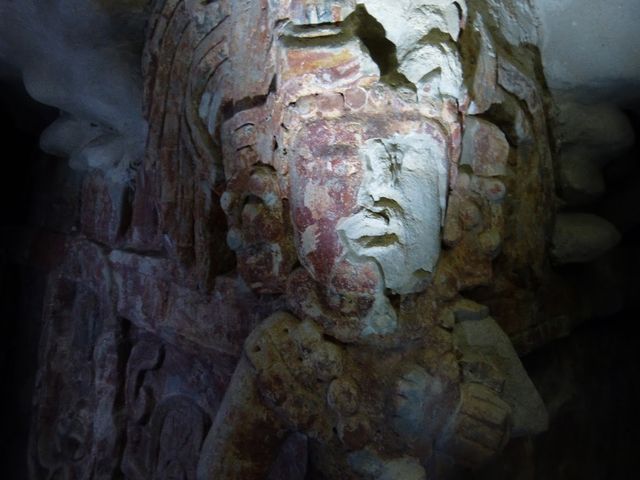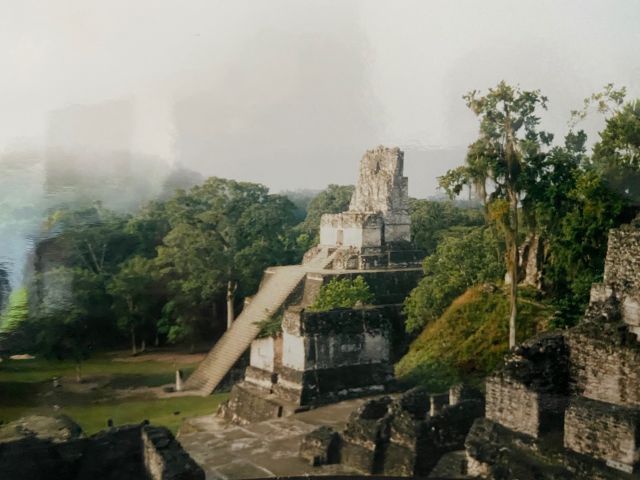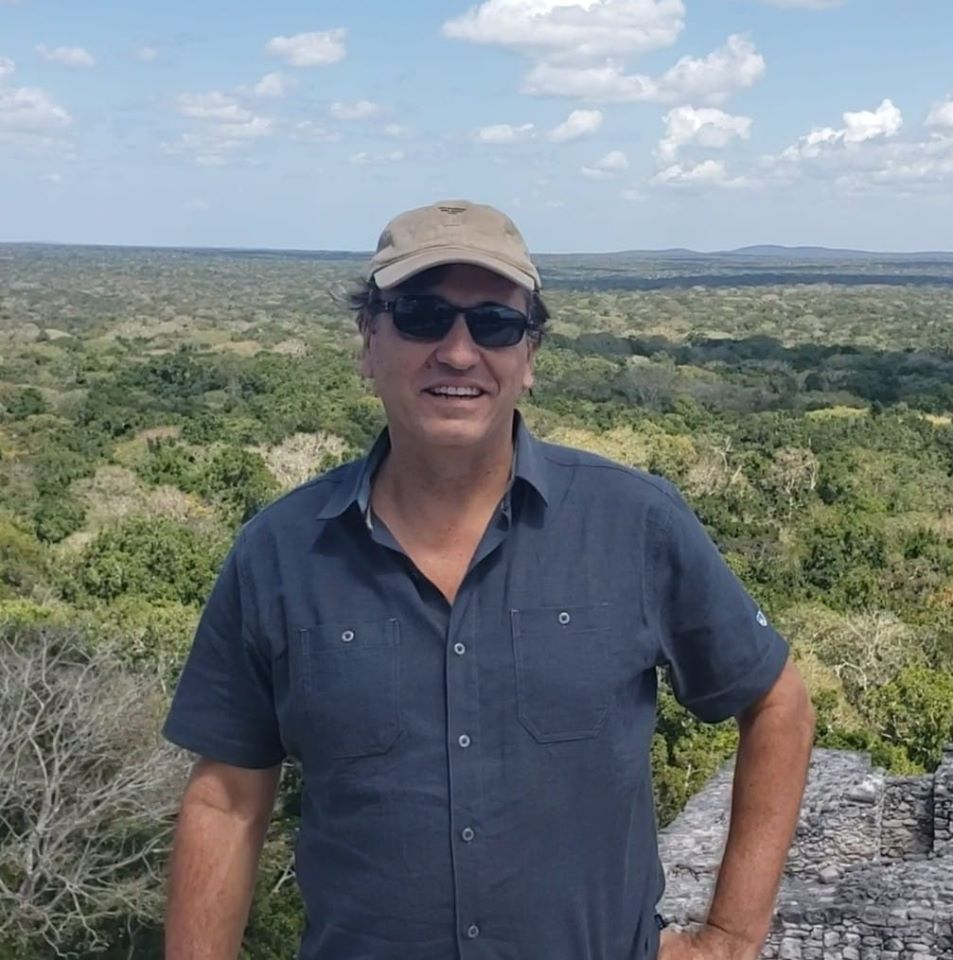Unravelling the secrets of the Mayan Empire
There is little that fascinates me more than the ancient Mayan culture. In terms of complexity and degree of development, this culture can measure up to the civilisations of the ancient Egyptians, the Romans and the ancient Chinese empire. Two decades ago, I visited Tikal, at that time the most important and famous Maya city in Guatemala. It was an almost magical experience to visit these ancient, partly overgrown remains of the highly civilised Mayan civilisation in the largest tropical rainforest in Central America.

The tip of the iceberg
The Mayan civilisation probably originated more than two thousand years before the beginning of our era. By now we know that the Maya used a fully developed and complex scripture and had much knowledge of astronomy, mathematics, agriculture, architecture and urban planning. In addition, they produced refined ceramic art. In recent years it has become clear that only the tip of the iceberg of this highly developed pre-Columbian civilisation has been discovered.
A few years ago, they started using the innovative LiDAR system. Since then, discoveries have gained momentum and more and more secrets of the Mayan empire are being unraveled. Below I list a number of fascinating discoveries.



Gente Mágica - Talking about the miraculous world of the Maya
In our online series Gente Mágica interviews Johan talked to Jimmy Rogers and archaeologist Francisco Estrada-Belli about the wonders of the ancient Mayan civilization. Francisco is currently working on the Mayan city of Holmul on the border between Guatemala and Belize and made some remarkable discoveries. Watch the conversation on our YouTube kanaal channel or listen to it as a podcast via Spotifyor Itunes.
Please note that the introduction is in Dutch. The interview itself is in English.
The LiDAR technique
LiDAR stands for Light Detection and Ranging. The LiDAR technique was developed by NASA in the 1960s but has only been used for research into ancient civilisations for a few years now. This technique is used to fly over the rainforest, by helicopter, aeroplane or drone. A device sends down light pulses. This makes it possible to make a digital scan of the surface and to 'see', as it were, what is beneath the rainforest. With the LiDAR you get a futuristic 3-D scan of the huge cities covered by the pristine rainforest, but then the archaeologists have to go into the jungle with a machete and compass to actually expose the treasures. Earlier this system was used to map the temple complex at Angkor Wat in the Cambodian rainforest. And now also, with the help of National Geographic and Pacunam (a Guatemalan organisation for the preservation of the Maya heritage), the Maya Biosphere Reserve in the north of Guatemala.
Want to know more about the LiDar technique at Tikal? Then take a look at the video below
(click on the image and the video starts playing)
Stunning findings in the Petén region
The results are astonishing. The Maya Biosphere Reserve in northern Guatemala is proving not only to be the largest interlinked tropical rainforest in Central America, but it is also a cultural treasure trove in terms of the highly developed Maya civilisation. In Tikal alone, more than 60 000 structures have been identified and it is now suspected that between 10 and 15 million people must have lived in this huge impenetrable Guatemalan rainforest. The ancient Mayan civilisation must therefore have been 10 times larger and much older than was thought possible until a few years ago.



The Classical Mayan Period
The ancient Mayan civilisation stretched south from the Mexican states of Chiapas, Tabasco and the Yucatán Peninsula via Guatemala and Belize. The southern border was marked by, among others, the Mayan city of Copán in Honduras. According to the studies, the rainforest in the north of Guatemala was most probably the centre of the ancient Maya civilisation with Tikal as the most important Maya city in Guatemala. Tikal was inhabited from around 400 B.C. until 1000 after the beginning of our era, during which time it experienced its flowering period from 300 to 800 A.D. This period is referred to by archaeologists as the Classical Mayan Period.
The Pre-Classical Mayan Period
For a long time, it was thought that the so-called pre-classical Mayan period (from 2000 and 1500 B.C. to about 200 years A.D.) was a time of hunters and gatherers. Thorough research and various discoveries, however, explain that even in this period the Maya civilization must have been enormously developed. An example of this is El Mirador about 100 kilometres north of Tikal. The American archaeologist Richard Hansen has been researching this Mayan city for over thirty years, which had its heyday in the so-called pre-Classical period. Here, too, the LiDAR scans show that the city was much more complex and developed than was assumed until a few years ago. This shows that the city must have been larger in size than contemporary Los Angeles.
See below El Mirador in 2 minutes
(click on the image and the video starts playing)
Special discovery by Archaeologist Francisco Estrada-Belli
Also deep in the rainforest, on the border with Belize, Guatemalan-Italian archaeologist Francisco Estrada-Belli is working on the Mayan city of Holmul. Although this city is smaller in size than El Mirador and Tikal, it is certain that it was a very important city. Research shows that the city was inhabited from 900 BC until 900 AD. This means that it covers both the Pre-Classical and Classical Mayan periods and is one of the longest inhabited Mayan cities.
In 2013 Francisco Estrada-Belli made a great discovery. He discovered an enormous frieze of 2 by 8 meters in a hidden pyramid near the city of Holmul. A frieze is an artistic relief that tells a story or history. With the discovery of this frieze, a gigantic encyclopaedia about Mayan culture was uncovered, as it were.


Photo source: Facebook
More about this discovery
In our online series Gente Mágica interviews Johan talked to Jimmy Rogers and archaeologist Francisco Estrada-Belli about the wonders of the ancient Mayan civilization. Francisco is currently working on the Mayan city of Holmul on the border between Guatemala and Belize and made some remarkable discoveries. Watch the conversation on our YouTube channel or listen to it as a podcast via Spotify or Itunes.
Please note that the introduction is in Dutch. The interview itself is in English.
Travel to the Mayan cities
If you are interested in these special archaeological sites and the Mayan culture and would like to make a trip to Guatemala yourself, we will be happy to help you. With us, you will visit Mayan cities like Tikal with the best guides and we can also take you to the remote complexes like El Mirador, Uaxactún and Holmul, where you can get acquainted with the archaeologists who unravel the secrets of the Mayans. Feel free to contact us for more information. Call +31 73 610 62 04 or send an email toinfo@sapapanatravel.nl.

